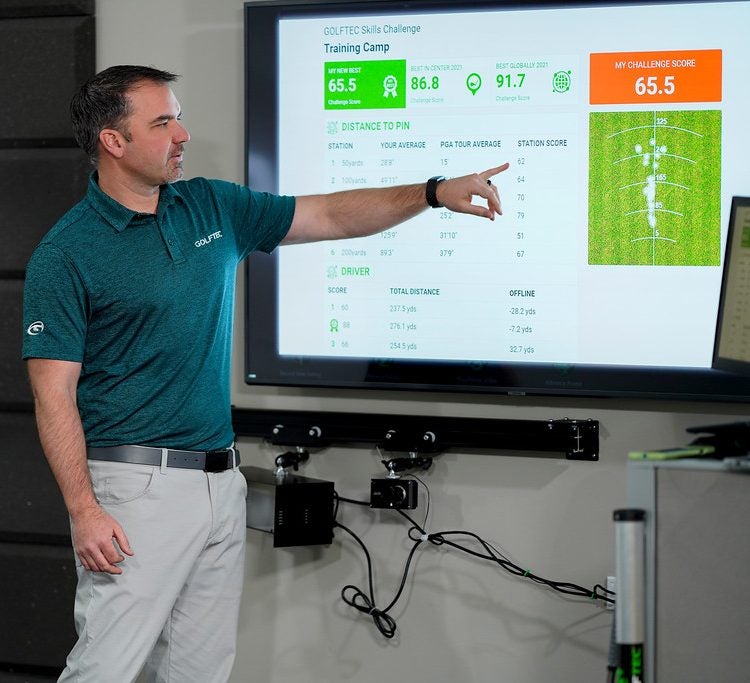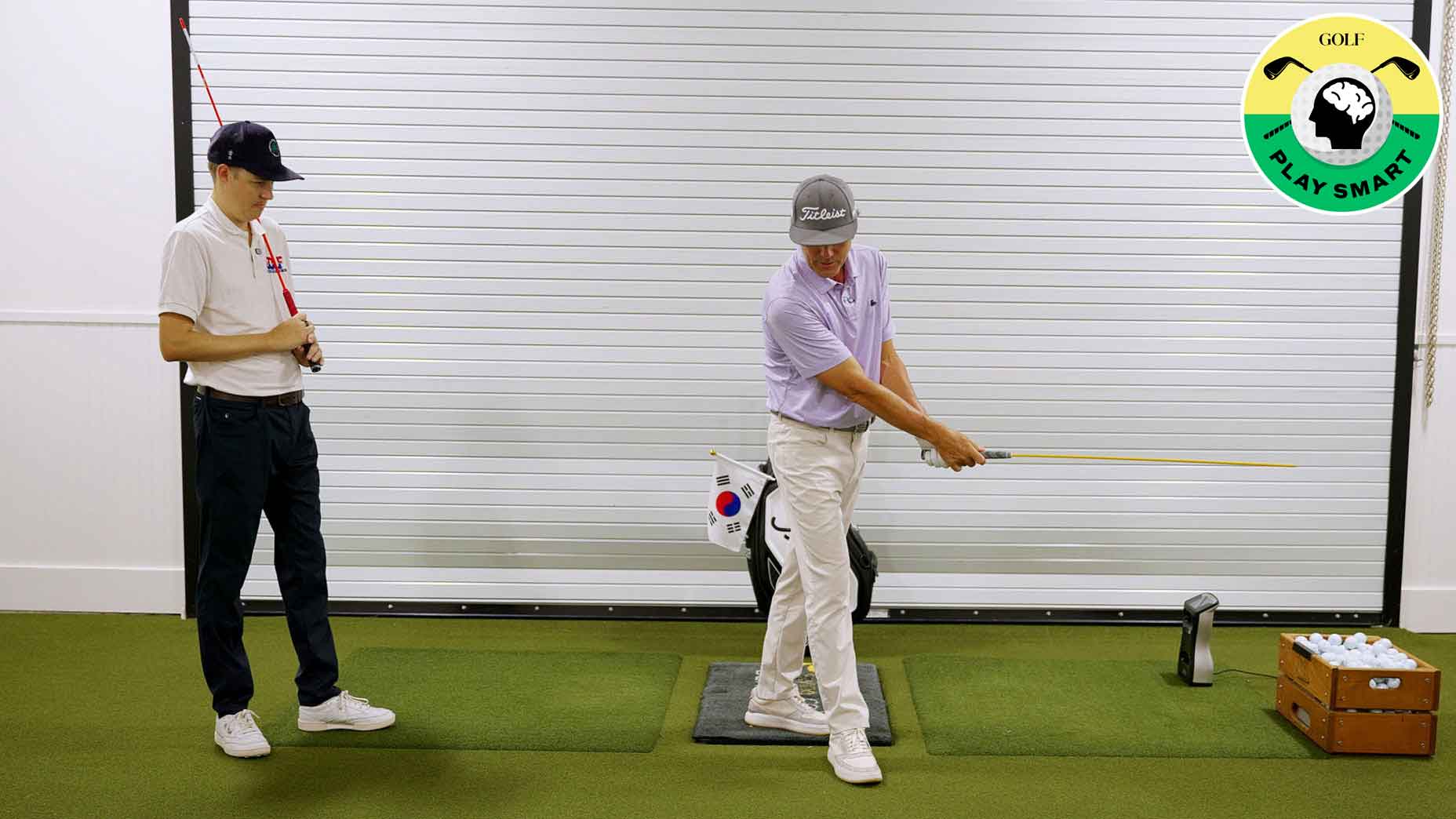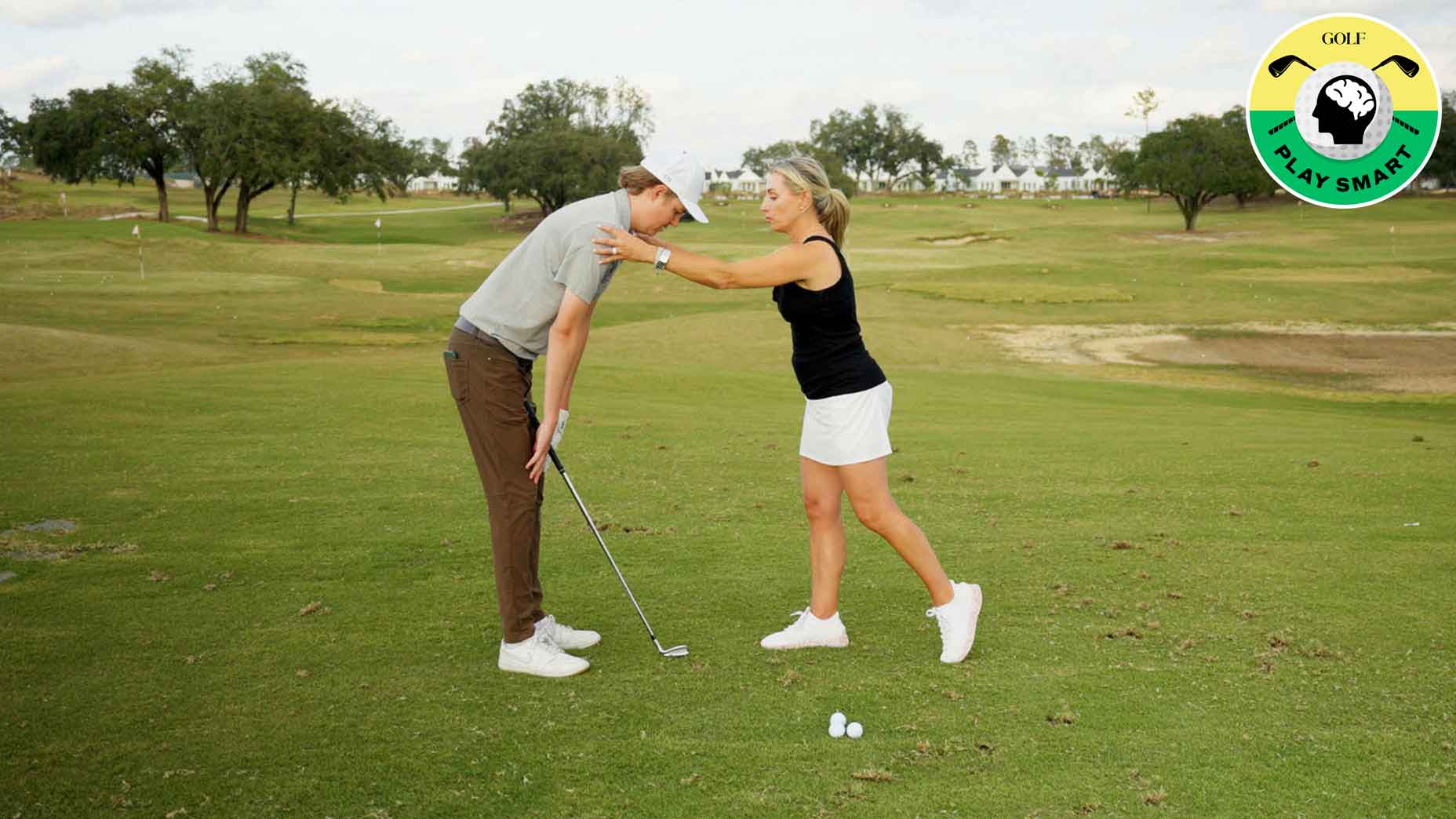Welcome to Play Smart, a game-improvement column that drops every Monday, Wednesday and Friday from Game Improvement Editor Luke Kerr-Dineen to help you play smarter, better golf.
There’s something so appealing about a golfer sizing up a shot, stepping into it and pulling the trigger without any hesitation. Playing fast oozes confidence, and in a game where it’s easy to fear the misses, it’s refreshing when somebody seems unbothered about things going wrong.
Aaron Baddeley, one of the best putters in PGA Tour history, embodies the miss-it-quick philosophy — except he doesn’t actually miss all that often. Once he sets up to the ball on the greens, he takes just one quick look at the hole and zero practice swings, before hitting the putt.
Every time we see it working — and conversely, when we see a golfer flub a shot after standing over the golf ball for ages — it’s easy to wonder if that’s the secret to their success.
Am I standing over the ball too long?
That’s the question GOLF Top 100 Teacher Eric Alpenfels of Pinehurst Resort and his research partner, Dr. Bob Christina of the University of North Carolina at Greensboro, set to find out.
The pair have authored numerous studies together on golf, and in their most recent in collaboration with GOLF.com, they test whether the length of time you stand over the ball affects the outcome of the shot. In other words, does standing over the ball for a short period of time, like Baddeley, help or hurt you?
To test this, the pair measured 32 different golfers shots split into a group of lower-handicaps (an average index of 5.6) and higher-handicaps (average index of 14.3).
From there, the golfers were instructed to hit shots in four different ways:
- No delay, which means the golfer started less than a second after taking their final look at the target.
- A shorter delay, defined as the golfer starting their swing after two seconds.
- A longer delay, when the golfer started their swing after standing over the ball for four full seconds.
- And a self-determined delay, in which the golfer started their swing when they were comfortable.

Swing Evaluation for GOLF.com Readers
What did they find?
- Interestingly, golfers’ worst performances in terms of consistency came in the self-determined portion — the condition that would supposedly be most comfortable for them.
- Alpenfels and Dr. Christina found that pulling the trigger quickly didn’t seem to help performance, either. There was no statistically significant difference between a zero-second and four-second delay.
- There was, however, a slight uptick in performance when players were prompted to use a two-second delay compared to their own delay.
Simply put, ‘hitting it quick’ doesn’t seem to help or hurt performance, and the length of time you stand over the ball has a pretty minimal impact overall. But in finding that outcome, Alpenfels and Dr. Christina happened upon something interesting along the way:
“The findings suggest that it is not so much the length of time of the delay over the ball before initiating the swing that is the important factor in affecting driving performance. Rather it is what players focus their attention on, think about and do during that delay time,” the study reads.
Alpenfels and Dr. Christina found that when players counted aloud themselves, their performance improved. It had the affect of keeping golfers’ “attention focused on the process focus and keep negative thoughts to the side,” the pair speculated, “rather than on thinking about how to execute various aspects of the swing about to be initiated.
They added this could be another source of study in the future. And in the meantime, don’t bother trying to force hitting the ball fast — it’s not the quick fix your game needs.










